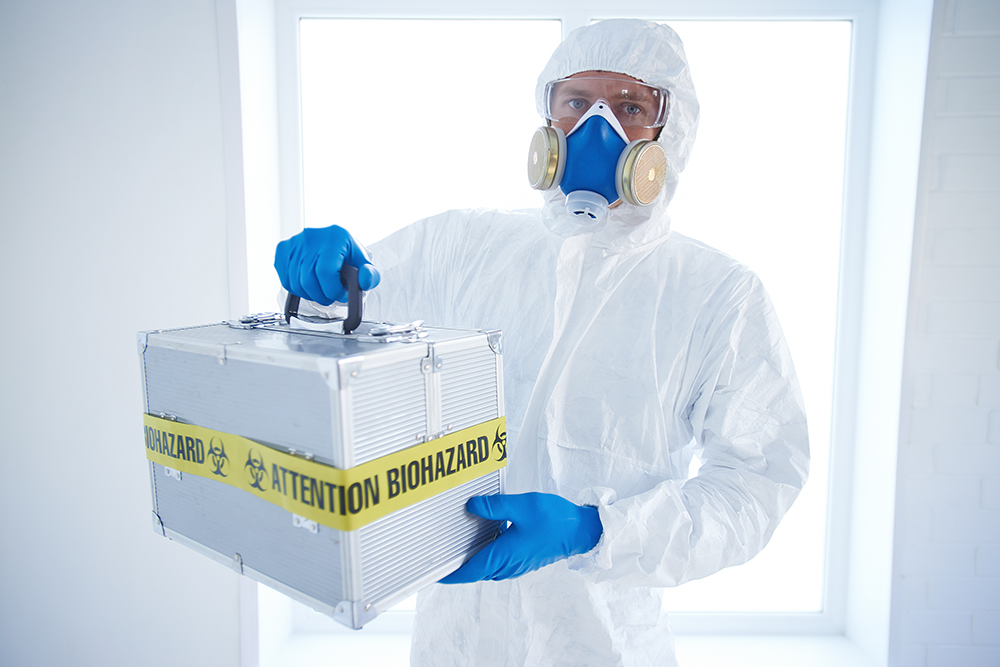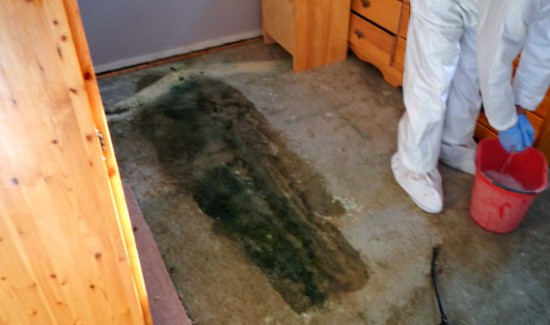Biohazard Removal: Safe Handling and Disposal of Hazardous Products
Biohazard Removal: Safe Handling and Disposal of Hazardous Products
Blog Article
Specialist Biohazard Cleanup for Crime Scenes, Trauma Incidents, and Polluted Areas
In the world of expert biohazard cleaning, precise attention to information and adherence to safety and security methods are vital. When confronted with the consequences of a criminal activity scene, injury case, or any kind of contaminated area, the importance of proper cleaning can not be downplayed. The dangers and complexities connected with biohazards require customized expertise and experience to guarantee effective remediation. As we explore the details of biohazard clean-up for these sensitive settings, a deeper understanding of the obstacles and essential treatments included will emerge, clarifying the indispensable role of expert cleanup services in restoring security and comfort.

Significance of Biohazard Cleaning
Biohazard clean-up complying with crime scenes and injury incidents is essential for making certain the safety of individuals and the setting. When these cases occur, they often leave behind a variety of biohazards such as blood, physical liquids, and other potentially infectious products. These materials can harbor unsafe pathogens like infections and germs, presenting severe health risks otherwise correctly cleansed and sterilized.
Professional biohazard cleanup solutions are trained to deal with these hazardous materials safely and effectively. They have the required equipment, such as personal safety gear and specialized cleansing representatives, to completely sanitize the affected areas. By turning over the clean-up to qualified specialists, individuals can prevent exposure to unsafe microorganisms and prevent the spread of transmittable illness.
Moreover, proper biohazard cleanup is necessary for securing the setting. Incorrect disposal of biohazardous products can pollute dirt, water sources, and air, posturing a threat to wildlife and the environment. By adhering to strict cleaning procedures, professionals can make sure that biohazards are safely eliminated and dealt with based on regulations, minimizing the danger of ecological contamination.
Types of Biohazards Encountered
Different dangerous products commonly experienced in crime scenes and trauma events present substantial wellness risks if not handled correctly. Blood and physical liquids are amongst the most usual biohazards located in these circumstances. These liquids can bring pathogens such as HIV, hepatitis B and C, and other harmful bacteria. Additionally, cells, organs, and body components can additionally posture significant wellness hazards as a result of possible contamination.
Another sort of biohazard typically experienced is sharp items like needles, broken glass, and various other things that can trigger injuries and send infections. Chemical dangers are also an issue, as criminal activity scenes may include materials like tear gas, pepper spray, or medication production materials that call for customized handling and disposal procedures to avoid more damage.
Moreover, mold and mildew and microorganisms development can occur in spaces where disintegration or prolonged direct exposure to dampness has taken place. These microbes can launch toxins and irritants into the air, posing breathing dangers to those exposed. Overall, biohazard clean-up professionals have to be fully equipped and qualified to successfully take care of these different kinds of unsafe products to make certain the safety and security of themselves and others.
Devices and Protective Gear
When resolving the vital job of managing biohazards experienced in criminal offense scenes and trauma events, the application of proper equipment and protective equipment is critical to guaranteeing the safety and security of individuals associated with the cleaning process. Individual protective equipment (PPE) such as gloves, masks, goggles, and coveralls are necessary to avoid direct call with possibly damaging compounds. Respirators are essential when managing biohazards that might come to be air-borne, protecting employees from inhaling unsafe fragments. Specialized cleansing devices like biohazard bags, anti-bacterials, and sharps containers are needed for the safe collection and disposal of polluted materials. Additionally, durable tools such as industrial-grade cleaner, foggers, and ozone generators may be required to completely sterilize the affected area. Making sure that all tools is properly preserved, on a regular basis examined, and utilized according to security guidelines is essential in decreasing crime scene cleaner youtube the threat of exposure to biohazards throughout clean-up procedures.
Cleaning Refine and Strategies
Effective and detailed cleanup of biohazardous materials website link from criminal activity scenes and injury incidents calls for careful interest to information and adherence to stringent safety protocols. The clean-up process generally includes several crucial actions.
Complying with the elimination of biohazardous products, the affected area undertakes a thorough cleansing and disinfection process. This step entails the usage of specialized cleansing agents and equipment to guarantee that all traces of contamination are eliminated. After cleansing, the area undergoes strenuous testing to validate that it is totally free and safe of any type of remaining biohazards.

Decontamination and Disposal Treatments
To guarantee thorough purification and proper disposal of biohazardous products, following the thorough cleanup procedure, certain procedures should be carefully adhered to with rigorous adherence to security procedures. Decontamination entails the elimination or neutralization of pollutants to minimize the danger of exposure and spread of harmful compounds. This process normally consists of cleaning, sanitizing, and disinfecting the affected location utilizing specific devices and EPA-approved chemicals.
As soon as decontamination is completed, correct disposal of biohazardous products is essential to stop more contamination or harm. Biohazardous waste, such as blood-soaked materials or physical liquids, should be carefully accumulated, packaged, and identified according to regulative standards. ATP testing. These products are then carried to licensed centers for disposal through proper networks, making sure compliance with regional, state, and government laws

Conclusion
To conclude, professional biohazard cleanup is essential for guaranteeing the risk-free and efficient elimination of dangerous materials from criminal offense scenes, injury cases, and contaminated spaces. By utilizing customized equipment, protective equipment, and following correct cleaning processes and techniques, biohazard cleaning helpful resources groups can properly decontaminate and dispose of biohazards, lessening the risk of exposure and harm to individuals and the atmosphere.
As we delve into the complexities of biohazard clean-up for these sensitive atmospheres, a much deeper understanding of the challenges and critical treatments entailed will arise, shedding light on the essential role of specialist clean-up services in restoring safety and peace of mind.
Specialist biohazard cleaning solutions are educated to take care of these dangerous products safely and successfully. By following rigorous clean-up methods, professionals can guarantee that biohazards are safely removed and disposed of in accordance with policies, decreasing the danger of environmental contamination.
In general, biohazard cleaning experts have to be well-appointed and qualified to successfully handle these numerous types of dangerous materials to ensure the safety of themselves and others.
When resolving the essential task of dealing with biohazards experienced in criminal activity scenes and trauma incidents, the use of appropriate devices and protective gear is paramount to making certain the security of people involved in the cleanup procedure.
Report this page